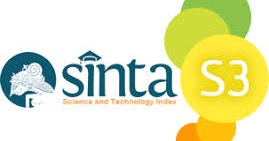Adverse Drug Reaction of Antipsychotic Medications Among Geriatric Patients: A Review
Downloads
Introduction: Antipsychotic is the drug of choice in patients with mental disorders, especially schizophrenia. The use of antipsychotics in geriatric patients presents a concern, as age can lead to physiological changes that can impact both therapeutic effects and side effects. Problems related to drug therapy, if not resolved, can lead to decreased quality of life, increased health care costs, increased clinical consequences, and even mortality. The aim of this study was to systematically evaluate and assess adverse drug reactions of antipsychotics among geriatric patients. Methods: Systematic literature search using Cochrane, ProQuest, Science Direct, Scopus, PubMed, and Google Scholar with a publication time limit from 2013 to 2023. We conducted the review in accordance with PRISMA provisions. We identified a total of 1145 articles and included 7 of them in the review. Results: This review presents the incidence of antipsychotic side effects in geriatric patients. The side effects that were observed included low blood pressure, increased blood pressure, somnolence, dizziness, constipation, agitation, weight gain, tremors and extra-pyramidal symptoms, hyperprolactinemia, tachycardia, bradycardia, insomnia, and sedation. Regarding the regimen, four studies reported olanzapine. Two studies reported clozapine and risperidone, and one study reported haloperidol, cariprazine, levomepromazine, and quetiapine. Conclusion: Follow-up and long-term studies with larger sample sizes in geriatrics are needed to confirm the side effects of antipsychotics. Knowledge of drug side effects is useful for determining appropriate therapy for geriatric patients with psychiatric disorders.
Copyright (c) 2025 Sholikhah Rosvita Oktasari, Zullies Ikawati, Bambang Hastha Yoga Legawa Budiman

This work is licensed under a Creative Commons Attribution-ShareAlike 4.0 International License.
1. Copyright of this journal is possession of the Author, by the knowledge of the Editorial Board and Journal Manager, while the moral right of the publication belongs to the author.
2. The journal allows the author(s) to retain publishing rights without restrictions.
3. The articles are published under a Creative Commons Attribution Share-Alike (CC BY-SA) license. Many research funding bodies prefer the CC BY-SA license because it allows for maximum dissemination and re-use of open access materials. Users are free to share (copy, distribute, and transmit) and remix (adapt) the contribution under this license, including for commercial purposes, as long as they attribute the contribution in the manner specified by the author or licensor.

























